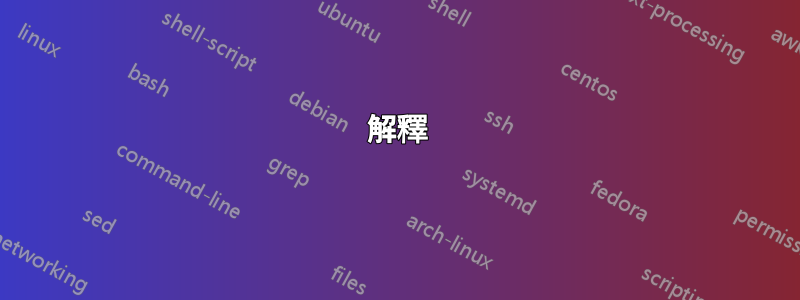
所以,之後@Symbol1 的出色解決方案對於我的最後一個問題,我有一個關於同一主題的新問題。使用提議的代碼,它改變了 的行為\pgfplotsplothandlerquiver@vis@path,point meta似乎不再起作用了...
mapped color這對和都有影響\pgfplotspointmetatransformed
\documentclass[border=9,tikz]{standalone}
\usepackage{pgfplots}\pgfplotsset{compat=newest}
\usetikzlibrary{arrows.meta}
\begin{document}
\makeatletter
\def\pgfplotsplothandlerquiver@vis@path#1{%
% remember (x,y) in a robust way
#1%
\pgfmathsetmacro\pgfplots@quiver@x{\pgf@x}%
\pgfmathsetmacro\pgfplots@quiver@y{\pgf@y}%
% calculate (u,v) in relative coordinate
\pgfplotsaxisvisphasetransformcoordinate\pgfplots@quiver@u\pgfplots@quiver@v\pgfplots@quiver@w%
\pgfplotsqpointxy{\pgfplots@quiver@u}{\pgfplots@quiver@v}%
\pgfmathsetmacro\pgfplots@quiver@u{\pgf@x-\pgfplots@quiver@x}%
\pgfmathsetmacro\pgfplots@quiver@v{\pgf@y-\pgfplots@quiver@y}%
% move to (x,y) and start drawing
{%
\pgftransformshift{\pgfpoint{\pgfplots@quiver@x}{\pgfplots@quiver@y}}%
\pgfpathmoveto{\pgfpointorigin}%
\pgfpathlineto{\pgfpoint\pgfplots@quiver@u\pgfplots@quiver@v}%
}%
}%
\begin{tikzpicture}
\begin{axis}[axis equal]
\addplot[
point meta=x,
quiver={u=x,v=y,
after arrow/.code={
\relax{% always protect the shift
\pgftransformshift{\pgfpoint{\pgfplots@quiver@x}{\pgfplots@quiver@y}}%
\node[below right]{\tiny\color{mapped color}\pgfplotspointmetatransformed};
}
}
},
->,
samples=10,domain=-1:1
] {x*x-1};
\addplot[
point meta=x,
quiver={u=x,v=y,
every arrow/.append style={%
-{Latex[scale length={max(0.1,\pgfplotspointmetatransformed/1000)}]},mapped color
},
},
->,
samples=10,domain=-1:1
] {x*x};
\end{axis}
\end{tikzpicture}
\end{document}
對於未更改的版本,縮放和著色有效,而對於更改的版本,這兩件事都不起作用。
為了完成,原始pgfplots程式碼被替換(我在這裡看不到任何有關元值的資訊?!?)
\def\pgfplotsplothandlerquiver@vis@path#1{%
\pgfpathmoveto{#1}%
\pgfplotsaxisvisphasetransformcoordinate\pgfplots@quiver@u\pgfplots@quiver@v\pgfplots@quiver@w
\pgfpathlineto{%
\pgfplotsifcurplotthreedim{%
\pgfplotsqpointxyz\pgfplots@quiver@u\pgfplots@quiver@v\pgfplots@quiver@w
}{%
\pgfplotsqpointxy\pgfplots@quiver@u\pgfplots@quiver@v
}%
}%
}%
答案1
以下內容對我有用。
\documentclass[border=9,tikz]{standalone}
\usepackage{pgfplots}\pgfplotsset{compat=newest}
\usetikzlibrary{arrows.meta}
\begin{document}
\makeatletter
\def\pgfplotsplothandlerquiver@vis@path#1{%
% remember (x,y) in a robust way
#1%
\pgfmathsetmacro\pgfplots@quiver@x{\pgf@x}\global\let\pgfplots@quiver@x\pgfplots@quiver@x%
\pgfmathsetmacro\pgfplots@quiver@y{\pgf@y}\global\let\pgfplots@quiver@y\pgfplots@quiver@y%
% calculate (u,v) in relative coordinate
\pgfplotsaxisvisphasetransformcoordinate\pgfplots@quiver@u\pgfplots@quiver@v\pgfplots@quiver@w%
\pgfplotsqpointxy{\pgfplots@quiver@u}{\pgfplots@quiver@v}%
\pgfmathsetmacro\pgfplots@quiver@u{\pgf@x-\pgfplots@quiver@x}%
\pgfmathsetmacro\pgfplots@quiver@v{\pgf@y-\pgfplots@quiver@y}%
% move to (x,y) and start drawing
{%
\pgftransformshift{\pgfpoint{\pgfplots@quiver@x}{\pgfplots@quiver@y}}%
\pgfpathmoveto{\pgfpointorigin}%
\pgfpathlineto{\pgfpoint\pgfplots@quiver@u\pgfplots@quiver@v}%
}%
}%
\begin{tikzpicture}
\begin{axis}[axis equal]
\addplot[
point meta=x,
quiver={
u=x,v=y,
every arrow/.append style={%
-{Latex[scale length={max(0.1,\pgfplotspointmetatransformed/1000)}]},mapped color
},
after arrow/.code={
\relax{% always protect the shift
\pgftransformshift{\pgfpoint{\pgfplots@quiver@x}{\pgfplots@quiver@y}}%
\node[below right]{\tiny\color{mapped color}\pgfplotspointmetatransformed};
}
}
},
->,samples=10,domain=-1:1
]{x*x-1};
\addplot[
point meta=x,
quiver={
u=x,v=y,
every arrow/.append style={%
-{Latex[scale length={max(0.1,\pgfplotspointmetatransformed/1000)}]},mapped color
},
},
->,samples=10,domain=-1:1
]{x*x};
\end{axis}
\end{tikzpicture}
\end{document}
解釋
這段程式碼和上一個問題中的程式碼的主要區別在於
\pgfmathsetmacro\pgfplots@quiver@x{\pgf@x}
\pgfmathsetmacro\pgfplots@quiver@y{\pgf@y}
被製成
\pgfmathsetmacro\pgfplots@quiver@x{\pgf@x}\global\let\pgfplots@quiver@x\pgfplots@quiver@x%
\pgfmathsetmacro\pgfplots@quiver@y{\pgf@y}\global\let\pgfplots@quiver@y\pgfplots@quiver@y%
這表明錯誤是由額外分組引入的。但為什麼會有額外的分組呢?嗯,因為當 pgfplots 遇到
\draw[/pgfplots/quiver/every arrow]...
\draw按照慣例,的選項僅影響 this \draw。因此鈦kZ 會將其放入\draw一個群組中。由於\pgfplotsplothandlerquiver@vis@path因此被放在一個群組中,因此您無法\pgfplots@quiver@x從外部看到(特別是在 中after arrow)。
順便說一句#1,\pgfplotsplothandlerquiver@vis@path粗略地說,
\global\pgf@x=\pgf@x
\global\pgf@x=\pgf@y
而上面的分析也說明了這樣做的必要性。




